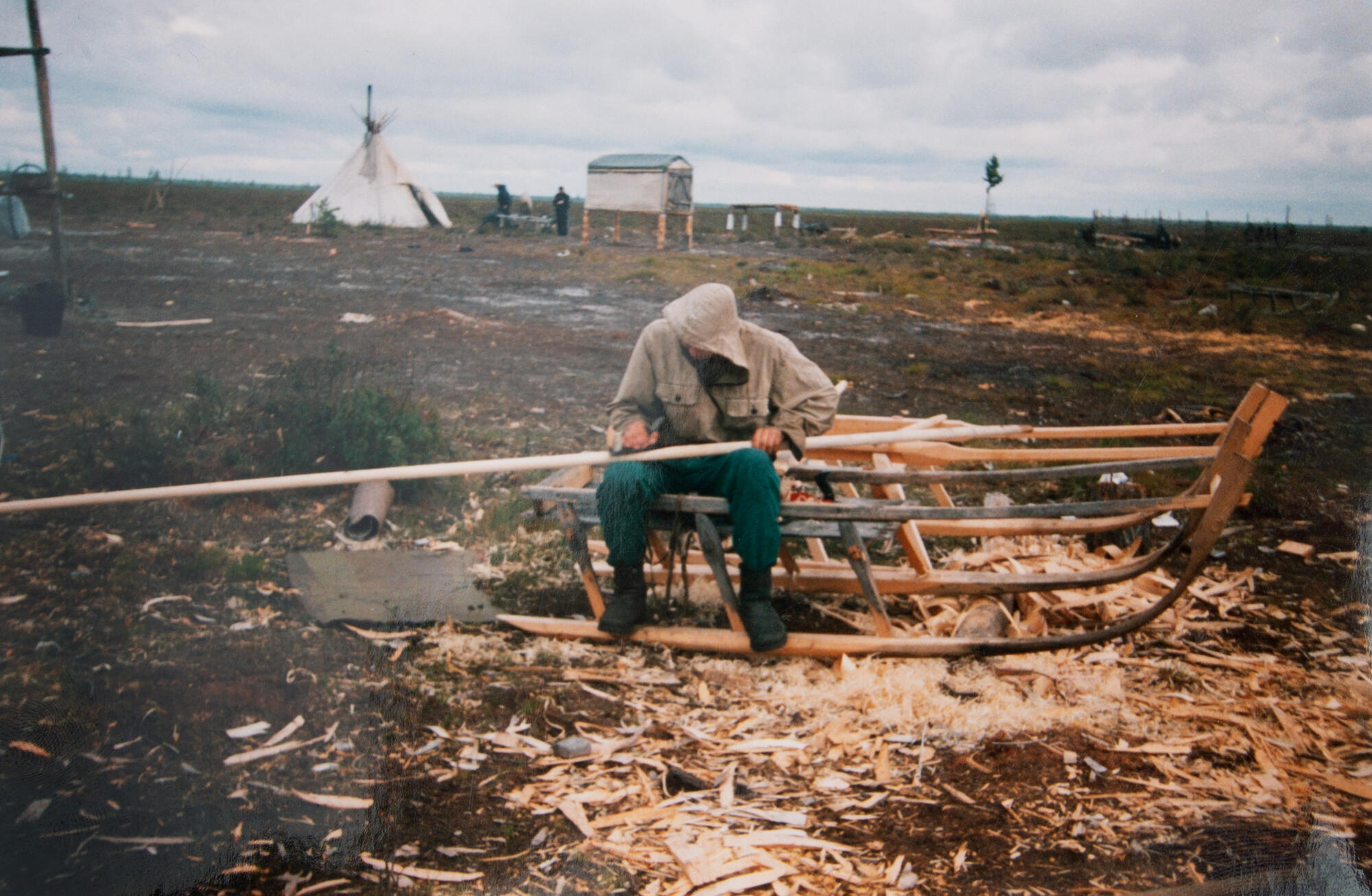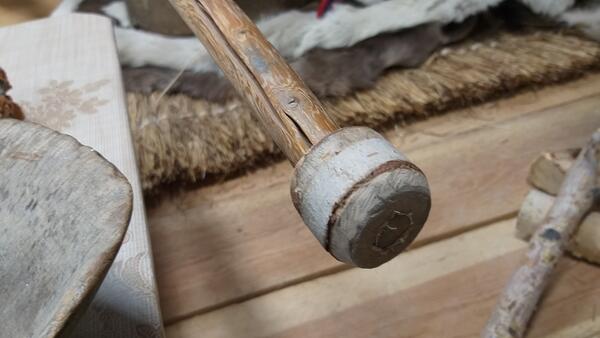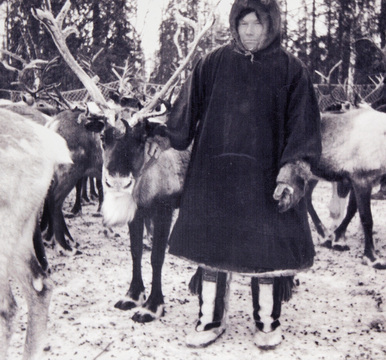A khorey is a wooden pole up to five meters long with a bone or wooden tip at the end. It is used to control reindeer in harness along with reins and voice commands. The word “khorey” comes from the Nenets “khared” meaning “drive”. In the past, an iron spear was put on the other end of the khorey — the pole served as an additional weapon on the road. The photograph from the Purovsky Museum shows a native of the Yamalo-Nenets Autonomous Okrug V.E. Pyak, who is making a khorey pole at the camp.
All the peoples of the North, from Scandinavia to Yakutia, use sleds pulled by reindeer for transportation. The light wooden sledges have a simple and reliable design that has not changed for more than a thousand years. Sledges are assembled without nails and screws by cutting and securing with vines and tendons. Broken sledges are not thrown away, only the broken part is replaced — in Yamal, wood is a valuable and rare material. The northerners use sleds to travel all year round — in winter on snow and ice, and in summer and autumn on smooth white reindeer lichen.
There are cargo and passenger, men’s and women’s, as well as manual, children’s, sacred, racing, closed and open sleds. Cargo sleds are longer, with powerful runners, often with sides and boxes. Children’s sleds are the smallest — they are the size of children’s iron sleds. Hand sledges are taken by hunters, who put a leather belt on the chest and pull the sled with weapons and prey.
The Nenets are a nomadic people, they often move from place to place in search of the best pasture for domestic reindeer and places for fishing. The Nenets put their folding house, a tent made of long poles and deer hides, as well as all household belongings on sleds in a strict order. A train of five or six sleds is called “argish”, and the average weight of one loaded sled is 200 kilograms.
From two to seven deer are harnessed to the sledges in a “fan”. They can travel up to 250 kilometers per day, moving at a speed of 15 km per hour. For this job, the most calm, hardy and strong deer are chosen — they are trained once they are one year old. Reindeer harnesses are made of leather, metal and bone; they are both strong and soft to withstand the traction of the reindeer without harming them.
All the peoples of the North, from Scandinavia to Yakutia, use sleds pulled by reindeer for transportation. The light wooden sledges have a simple and reliable design that has not changed for more than a thousand years. Sledges are assembled without nails and screws by cutting and securing with vines and tendons. Broken sledges are not thrown away, only the broken part is replaced — in Yamal, wood is a valuable and rare material. The northerners use sleds to travel all year round — in winter on snow and ice, and in summer and autumn on smooth white reindeer lichen.
There are cargo and passenger, men’s and women’s, as well as manual, children’s, sacred, racing, closed and open sleds. Cargo sleds are longer, with powerful runners, often with sides and boxes. Children’s sleds are the smallest — they are the size of children’s iron sleds. Hand sledges are taken by hunters, who put a leather belt on the chest and pull the sled with weapons and prey.
The Nenets are a nomadic people, they often move from place to place in search of the best pasture for domestic reindeer and places for fishing. The Nenets put their folding house, a tent made of long poles and deer hides, as well as all household belongings on sleds in a strict order. A train of five or six sleds is called “argish”, and the average weight of one loaded sled is 200 kilograms.
From two to seven deer are harnessed to the sledges in a “fan”. They can travel up to 250 kilometers per day, moving at a speed of 15 km per hour. For this job, the most calm, hardy and strong deer are chosen — they are trained once they are one year old. Reindeer harnesses are made of leather, metal and bone; they are both strong and soft to withstand the traction of the reindeer without harming them.



